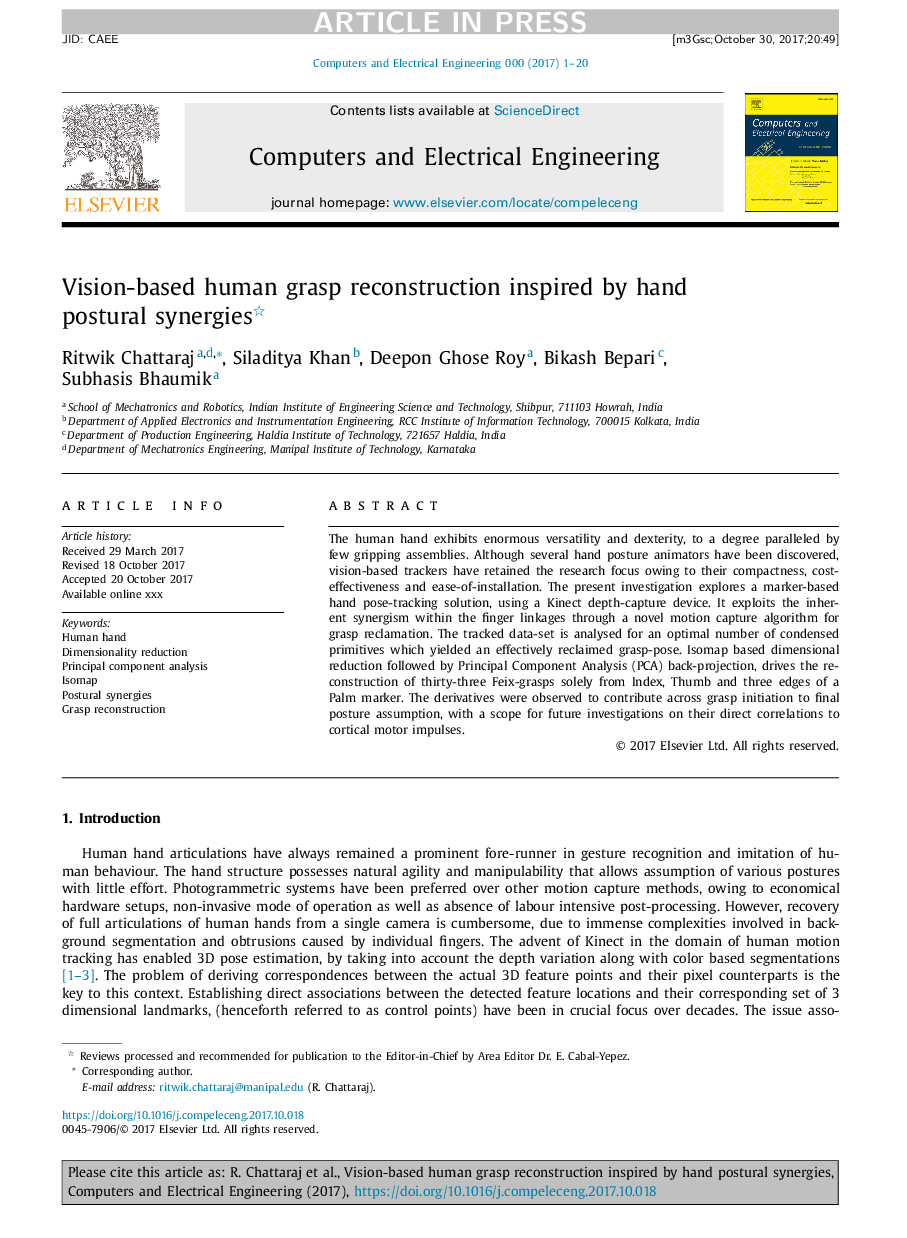| Article ID | Journal | Published Year | Pages | File Type |
|---|---|---|---|---|
| 9952240 | Computers & Electrical Engineering | 2018 | 20 Pages |
Abstract
The human hand exhibits enormous versatility and dexterity, to a degree paralleled by few gripping assemblies. Although several hand posture animators have been discovered, vision-based trackers have retained the research focus owing to their compactness, cost-effectiveness and ease-of-installation. The present investigation explores a marker-based hand pose-tracking solution, using a Kinect depth-capture device. It exploits the inherent synergism within the finger linkages through a novel motion capture algorithm for grasp reclamation. The tracked data-set is analysed for an optimal number of condensed primitives which yielded an effectively reclaimed grasp-pose. Isomap based dimensional reduction followed by Principal Component Analysis (PCA) back-projection, drives the reconstruction of thirty-three Feix-grasps solely from Index, Thumb and three edges of a Palm marker. The derivatives were observed to contribute across grasp initiation to final posture assumption, with a scope for future investigations on their direct correlations to cortical motor impulses.
Related Topics
Physical Sciences and Engineering
Computer Science
Computer Networks and Communications
Authors
Ritwik Chattaraj, Siladitya Khan, Deepon Ghose Roy, Bikash Bepari, Subhasis Bhaumik,
